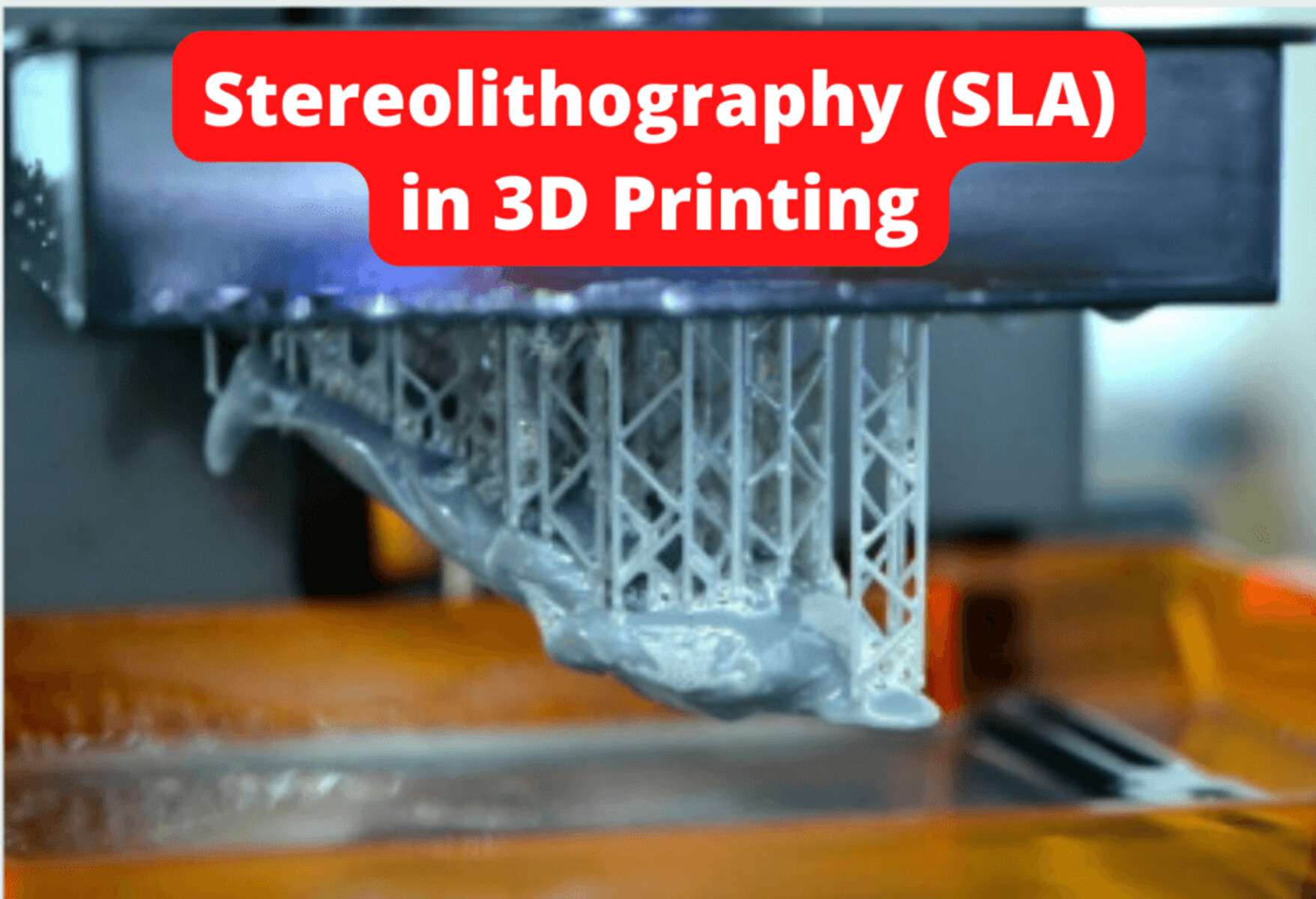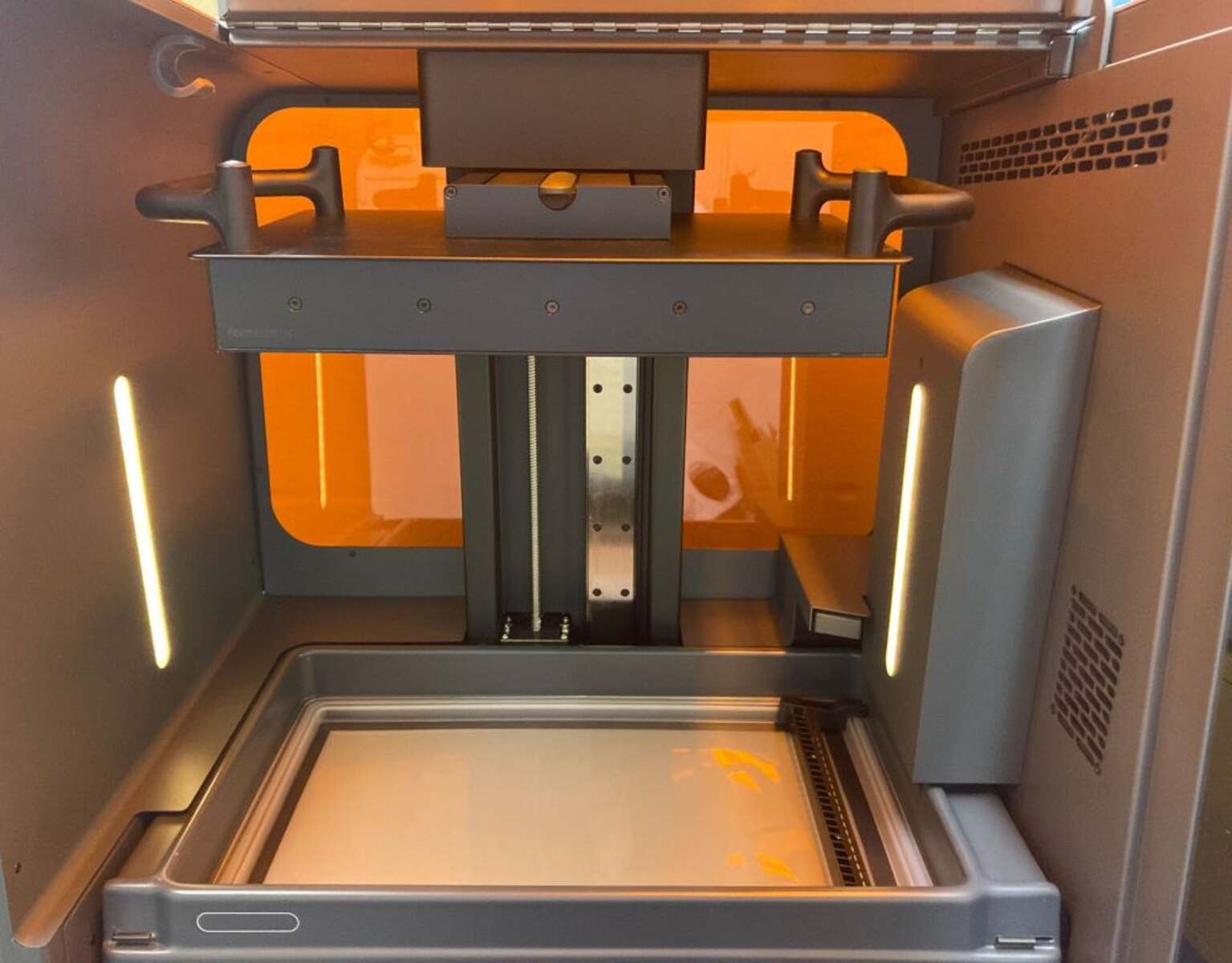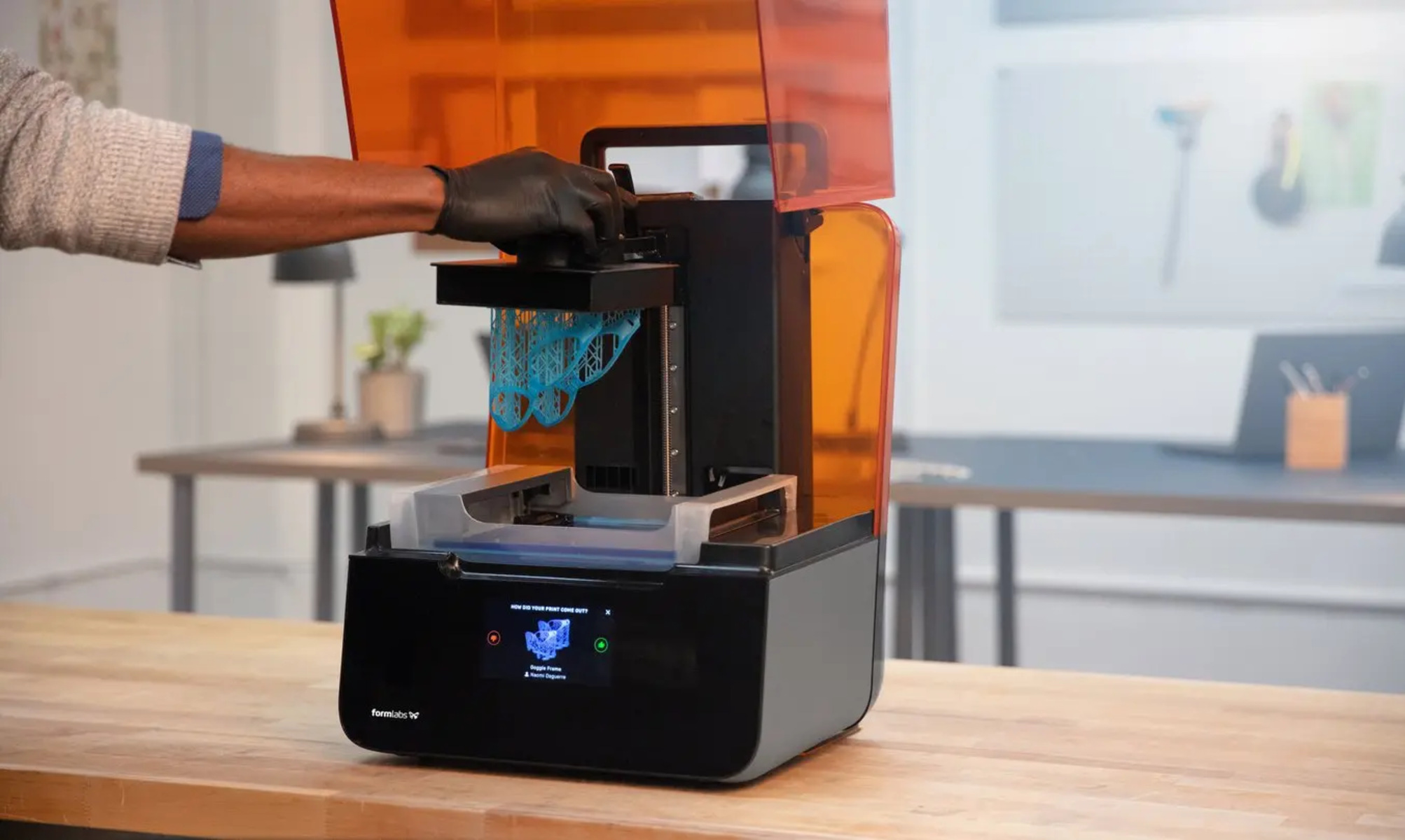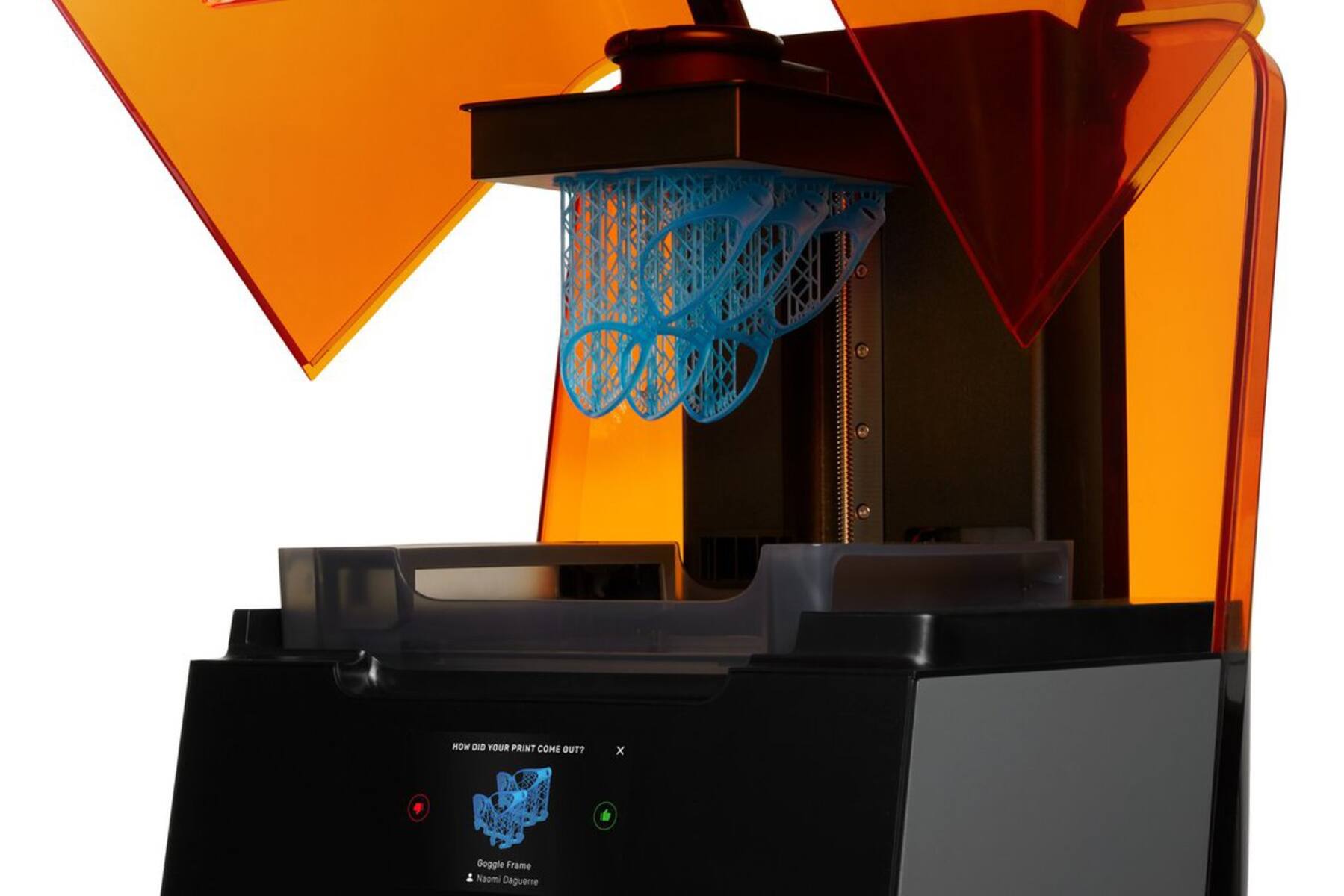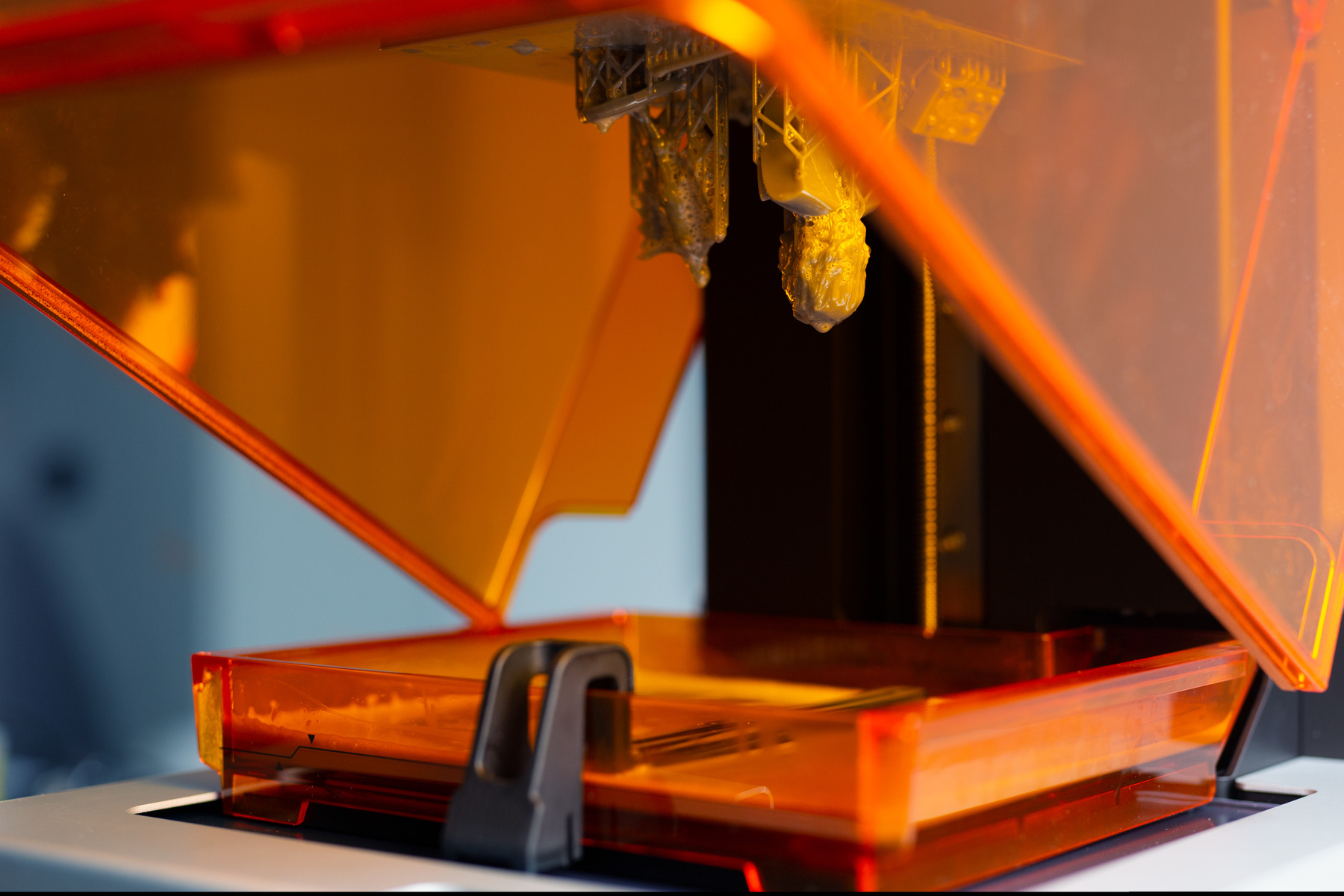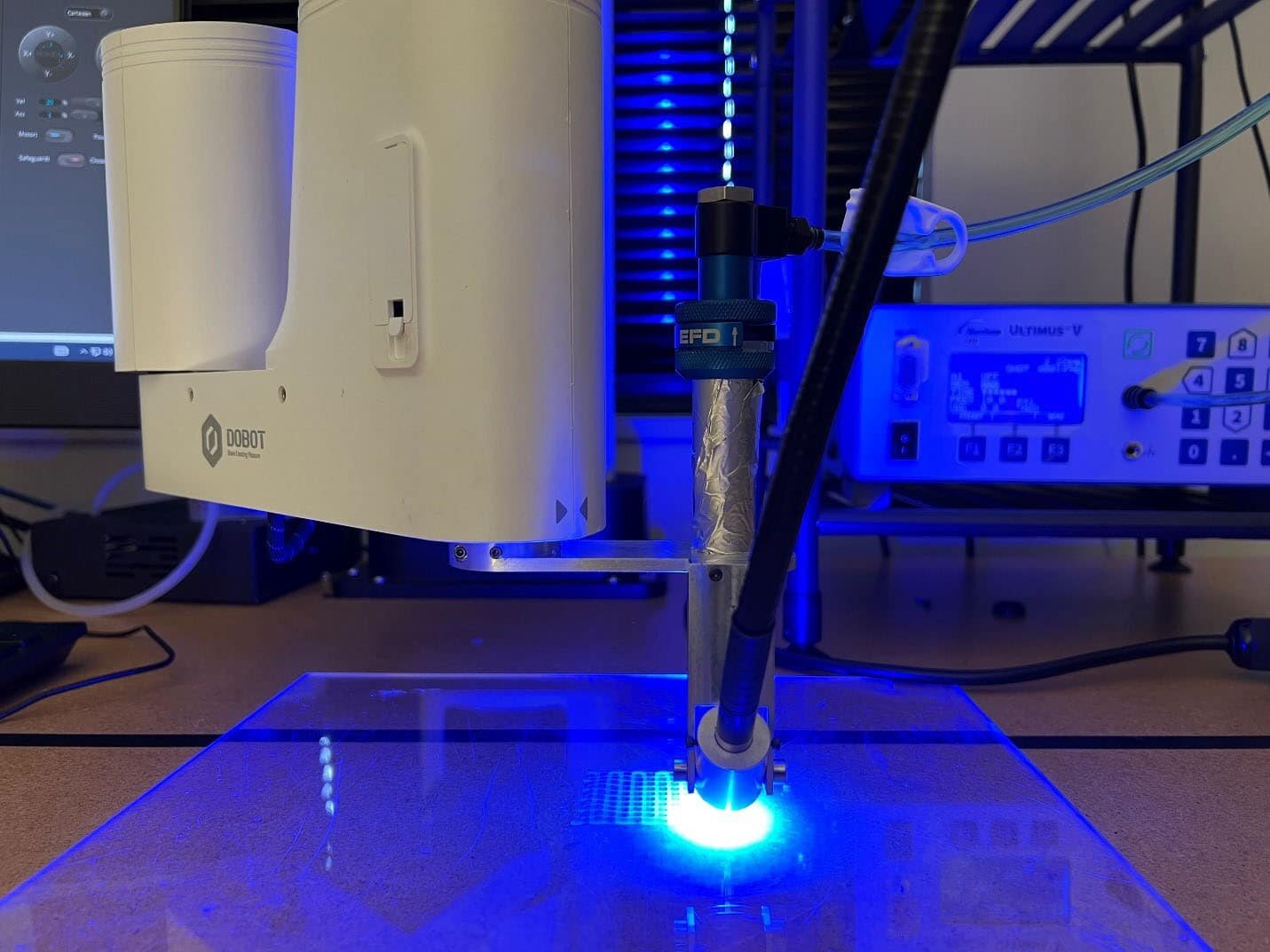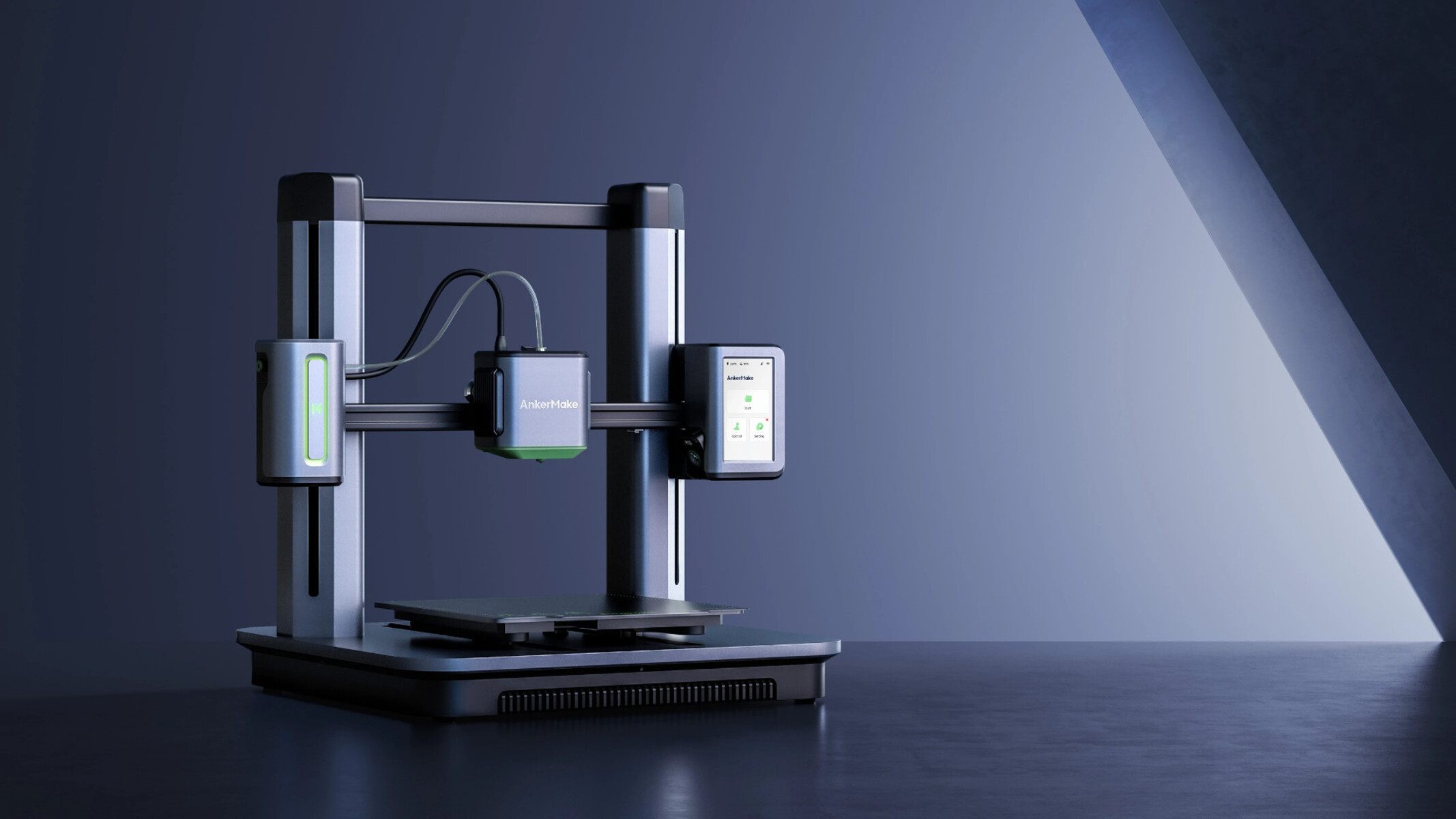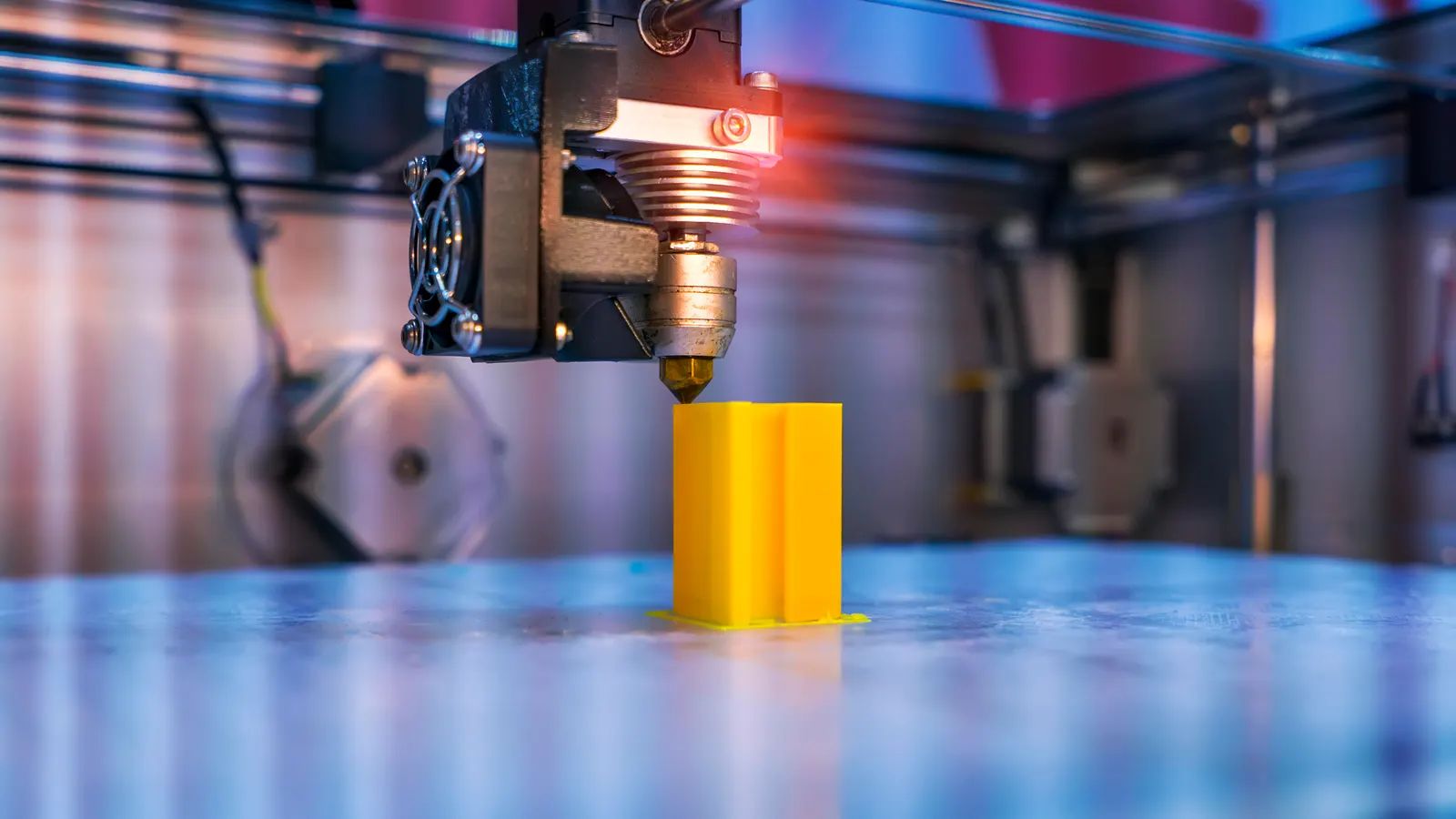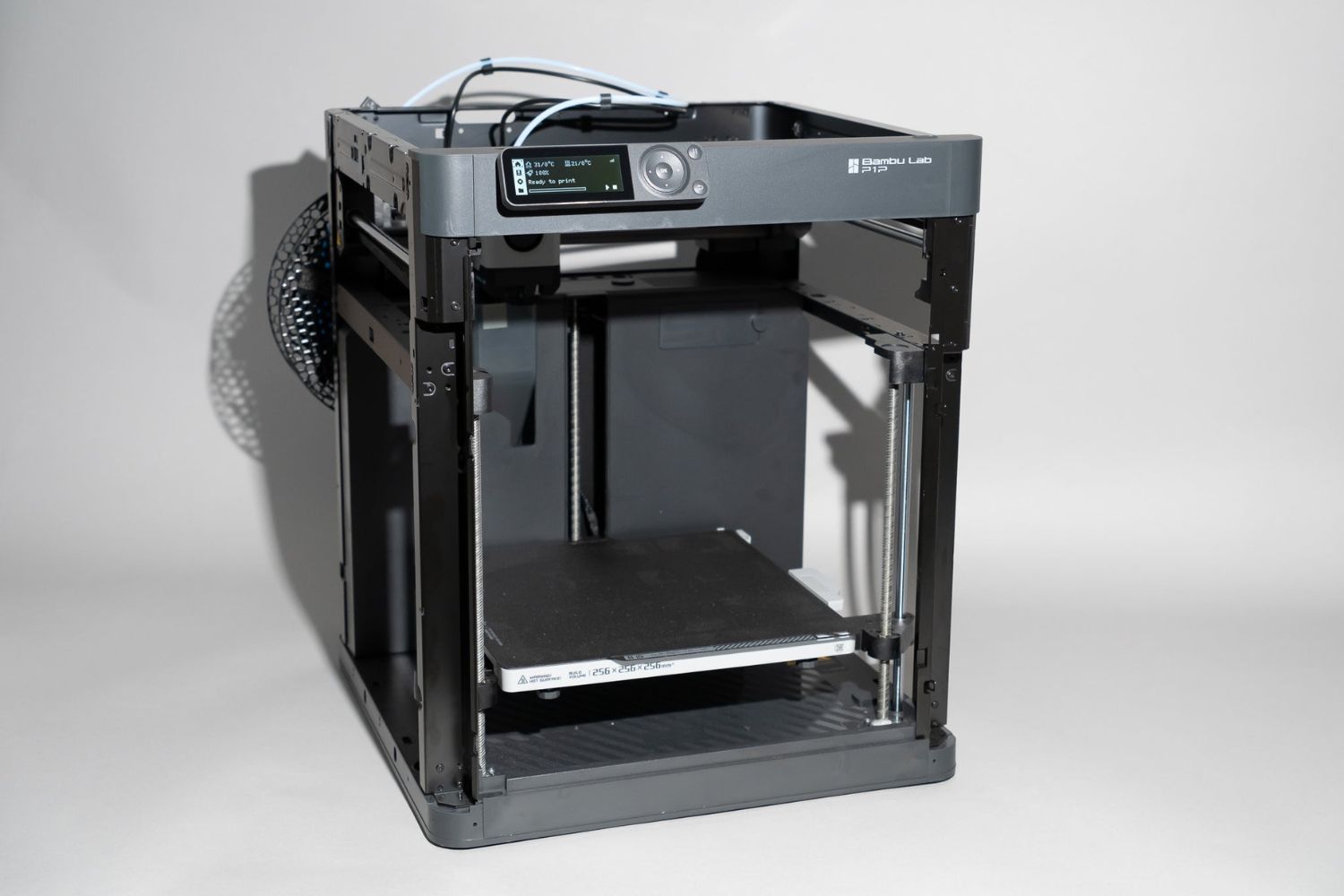What Is Stereolithography Apparatus (SLA) in 3D Printing?
Stereolithography Apparatus, commonly known as SLA, is one of the most popular and widely used 3D printing technologies. It is an additive manufacturing process that allows for the creation of highly detailed and accurate three-dimensional objects. SLA utilizes a liquid photopolymer resin that is solidified layer by layer using a UV laser or other light sources, resulting in the formation of solid objects.
With SLA, complex shapes, intricate designs, and fine details can be achieved with precision and consistency. It revolutionizes the traditional manufacturing process by enabling the production of customized and complex parts in a cost-effective and time-efficient manner.
The concept of SLA was first introduced and patented by Charles W. Hull in the early 1980s, making it one of the earliest 3D printing technologies. Since then, SLA has undergone numerous advancements and improvements, leading to its widespread adoption across various industries such as automotive, healthcare, aerospace, and jewelry.
SLA utilizes a technique called “vaporization and polymerization” to create objects. The process begins with a 3D model of the object, which is sliced into thin layers using specialized software. The resin is contained in a vat, and a platform is submerged into the liquid. The UV laser or light source selectively exposes the resin, solidifying it according to the pattern of each layer. Once a layer is completed, the platform moves slightly upward, and the process repeats until the entire object is formed.
SLA is known for its ability to produce highly detailed and smooth surfaces, making it suitable for creating prototypes and intricate models. Its accuracy is measured in microns, allowing for the production of parts with tight tolerances. The versatility of SLA also enables the incorporation of different materials, such as flexible and transparent resins, to achieve desired properties in the final object.
Another notable advantage of SLA is its ability to create complex geometries and hollow structures with internal channels, which would be challenging or impossible to produce using traditional manufacturing methods. This opens up new possibilities for design innovation and optimization.
Introduction
3D printing, also known as additive manufacturing, has revolutionized the way we produce objects. It has opened up endless possibilities in various industries, from rapid prototyping to customized manufacturing. One of the core technologies in 3D printing is Stereolithography Apparatus (SLA), which has gained significant popularity and recognition in the industry.
In this article, we will delve into the world of SLA in 3D printing, exploring its definition, working mechanism, advantages, applications, and limitations. Whether you’re new to the world of 3D printing or seeking to expand your knowledge, this article will provide you with a comprehensive understanding of SLA technology.
Stereolithography Apparatus, commonly referred to as SLA, utilizes a liquid photopolymer resin that solidifies layer by layer using a UV laser or other light sources. The resin is selectively exposed to the light, resulting in the formation of a solid object. SLA’s ability to produce highly detailed and accurate parts with intricate geometries has made it a go-to choice for many industries.
SLA has a rich history, dating back to the early 1980s when it was first introduced and patented by Charles W. Hull. Since then, SLA has undergone continuous refinement and advancement, leading to its widespread adoption in industries such as automotive, healthcare, aerospace, and jewelry.
In this article, we will explore how SLA works, the advantages it offers over other 3D printing technologies, and the diverse range of applications it has found in various industries. We will also discuss the limitations of SLA to provide a balanced understanding of its capabilities and potential use cases.
Whether you’re an engineer, designer, hobbyist, or simply curious about the world of 3D printing, understanding the fundamentals of SLA technology is essential. So, let’s dive into the fascinating world of Stereolithography Apparatus and unlock the potential of this transformative 3D printing technology.
Definition of Stereolithography Apparatus (SLA)
Stereolithography Apparatus (SLA) is a 3D printing technology that utilizes a liquid photopolymer resin to create solid objects layer by layer. It is an additive manufacturing process that has gained significant popularity due to its ability to produce highly detailed and accurate parts with complex geometries.
In SLA, the liquid resin is contained in a vat, and a platform is submerged into the resin. A UV laser or other light sources selectively expose the resin, solidifying it according to the pattern of each layer. This process is repeated until the entire object is formed.
The term “stereolithography” is derived from the Greek words “stereos” meaning solid, “lithos” meaning stone, and “graphein” meaning to write. It accurately reflects the technology’s ability to create solid objects by writing them layer by layer using light.
SLA offers several advantages over traditional manufacturing methods. Its ability to produce intricate details, smooth surfaces, and complex geometries makes it a preferred choice for prototyping, product development, and even small-scale production. It allows designers and engineers to test and refine their designs before moving forward with mass production, ultimately saving time and costs.
One key element of SLA technology is the photopolymer resin. This resin has unique properties that enable it to transform from a liquid to a solid when exposed to specific light wavelengths. The resin typically contains a photosensitive monomer, a polymerization initiator, and other additives that enhance its performance.
SLA 3D printers use specialized software and slicing algorithms to convert a 3D model into printable layers. The software defines the object’s geometry, including its shape, size, and internal structures. It also calculates the movement of the platform and the laser, ensuring precise layer-by-layer construction.
SLA has paved the way for advancements in various industries, such as automotive, aerospace, healthcare, and consumer goods. It has enabled the creation of complex designs and reduced lead times in product development. From architectural models to customized jewelry, SLA has proven to be a versatile technology with a wide range of applications.
In the next sections, we will explore how SLA works in more detail, the advantages it offers, and the various applications where it is successfully employed.
How Does SLA Work?
Stereolithography Apparatus (SLA) works by utilizing a process called “vaporization and polymerization” to transform a liquid photopolymer resin into solid objects. Let’s take a closer look at the step-by-step process of how SLA works.
- Preparation: The first step in SLA is to prepare the 3D model of the object to be printed. This model is typically created using computer-aided design (CAD) software, which allows precise control over the shape, size, and details of the object. The model is then imported into specialized slicing software that prepares it for the printing process. This software slices the 3D model into thin layers, typically ranging from 0.05mm to 0.15mm in thickness.
- Vat Filling: The next step is to prepare the SLA printer for printing. The liquid photopolymer resin is poured into a transparent vat, which is typically made of acrylic or glass. The vat is placed on the build platform, which can move up and down or side to side, depending on the printer’s design.
- Laser Exposure: Once the vat is filled, the SLA printer begins the printing process. A UV laser or other light source is used to selectively expose the resin to create each layer of the object. The laser is controlled by the slicing software, which guides it to solidify the resin following the pattern of the current layer.
- Layer-by-Layer Construction: As the laser exposes the resin, it causes a chemical reaction known as polymerization. This reaction transforms the liquid resin into a solid, layer by layer. Once a layer is completed, the build platform moves slightly upward or sideways (depending on the printer) to make room for the next layer. The process continues until all the layers are formed and the complete object is created.
- Post-Processing: Once the printing process is finished, the printed object remains submerged in the liquid resin. To remove excess uncured resin, the object is typically rinsed in a solvent or isopropyl alcohol. Some SLA printers also have built-in cleaning mechanisms that automatically remove excess resin. After cleaning, the object is usually post-cured or exposed to UV light to further solidify the resin and enhance its mechanical properties.
One of the advantages of SLA is its ability to create objects with intricate details, smooth surfaces, and complex geometries. The precision of the laser and the fine resolution of the layers contribute to the high level of accuracy and detail that can be achieved with SLA printing. Additionally, SLA allows for the use of different types of resins, including transparent, flexible, and rigid ones, providing flexibility in material selection and resulting properties.
With its layer-by-layer construction and the ability to produce complex parts, SLA opens up possibilities for a wide range of applications, including prototyping, product development, architectural models, dental and medical devices, jewelry design, and more. The ability to rapidly create functional prototypes and test designs contributes to faster product development cycles and enables designers and engineers to iterate and refine their models before proceeding with full-scale production.
In the following sections, we will explore the advantages and limitations of SLA technology, as well as the diverse applications where it excels.
Advantages of SLA 3D Printing
Stereolithography Apparatus (SLA) technology offers numerous advantages that make it a preferred choice for various industries and applications. Let’s explore some of the key advantages of SLA 3D printing.
- Precision and Detail: SLA is renowned for its ability to produce highly detailed and accurate parts with intricate geometries. The fine resolution of the layers and the precise control of the laser allow for the creation of objects with intricate details, smooth surfaces, and tight tolerances. This precision is especially advantageous for applications that require precise fitting, such as engineering prototypes or dental models.
- Wide Range of Materials: SLA offers versatility in material selection, allowing for the use of various types of photopolymer resins. These resins come in different properties, such as transparent, flexible, and rigid, providing flexibility in choosing the desired material characteristics for the printed objects. This range of materials expands the possibilities for diverse applications across industries.
- Speed and Efficiency: SLA is known for its fast printing speed, especially when compared to other 3D printing technologies. The layer-by-layer construction and the precise control of the laser enable the efficient production of objects. This speed is advantageous for rapid prototyping, where shortened lead times are vital for product development and design validation.
- Complex Geometries: SLA excels at creating complex geometries, including intricate shapes, overhangs, and internal channels. This capability is particularly useful in industries such as aerospace, where the lightweight and optimized designs are critical for performance. SLA’s ability to produce intricate geometries allows designers and engineers to explore innovative designs and push the boundaries of what is possible.
- Cost-Effective Prototyping: SLA enables cost-effective prototyping by reducing the time and cost associated with conventional prototyping processes. With SLA, designers can quickly iterate and test their designs, identifying potential flaws or improvements early in the development cycle. This helps to minimize costly design iterations and accelerates the time to market for new products.
- Customization and Personalization: SLA allows for customization and personalization of printed objects. The ability to create unique designs and tailor-made products makes SLA ideal for industries such as jewelry, dentistry, and customized manufacturing. Whether it’s creating intricate jewelry pieces or dental aligners, SLA can bring personalized designs to life.
These advantages make SLA technology a go-to choice for various applications across industries, including automotive, aerospace, healthcare, consumer goods, and more. From rapid prototyping to customized manufacturing, SLA offers a wide range of benefits that contribute to enhanced productivity, design flexibility, and innovation.
In the following sections, we will explore the specific applications where SLA technology excels, as well as its limitations that should be taken into consideration.
Applications of SLA Technology
Stereolithography Apparatus (SLA) technology has found wide-ranging applications across various industries. Its ability to produce highly detailed and accurate parts with complex geometries makes it a versatile tool for various applications. Let’s explore some of the key areas where SLA technology excels:
- Prototyping and Product Development: SLA is widely used in prototyping and product development processes. Its speed, accuracy, and ability to create complex geometries allow designers and engineers to quickly iterate and test their designs before moving on to mass production. Whether it’s creating functional prototypes or visual models, SLA enables efficient and cost-effective product development cycles.
- Dental and Medical Applications: SLA plays a vital role in the dental and medical industries. It allows for the production of dental models, aligners, surgical guides, and customized implants with high precision and accuracy. SLA’s ability to create intricate dental and medical devices helps improve patient outcomes and streamlines treatments.
- Jewelry Design and Manufacturing: SLA has made significant contributions to the jewelry industry. It enables the creation of intricate and detailed jewelry designs that were previously challenging or impossible to achieve through traditional manufacturing methods. With SLA, jewelry designers can transform their creative concepts into tangible pieces with unparalleled precision and complexity.
- Aerospace and Automotive Components: SLA is widely utilized in the aerospace and automotive industries. It allows for the production of lightweight, complex, and optimized components. From concept models and wind tunnel testing to functional prototypes and final parts, SLA plays a crucial role in the design, development, and testing of aerospace and automotive components.
- Architectural Models: SLA is commonly used in architectural firms to create intricate and detailed models of buildings and structures. These models help architects and clients visualize the designs, analyze spatial relationships, and make informed decisions. SLA technology enables the production of accurate and highly detailed architectural models, contributing to better design communication and project planning.
- Education and Research: SLA technology has found its place in educational institutions and research settings. It allows students, researchers, and educators to explore concepts, test hypotheses, and develop innovative solutions. The precision and versatility of SLA make it a valuable tool for teaching 3D printing principles, materials science, and design thinking.
These are just a few examples of the broad range of applications where SLA technology shines. Its ability to produce intricate details, complex geometries, and high-quality surfaces opens up possibilities for innovation and design freedom across various industries.
While SLA technology offers numerous advantages, it also has certain limitations that should be considered for specific applications. In the following section, we will explore the limitations of SLA 3D printing to provide a holistic understanding of its capabilities.
Limitations of SLA 3D Printing
While Stereolithography Apparatus (SLA) technology offers significant advantages, it also has certain limitations that should be taken into consideration for specific applications. Let’s explore some of the key limitations of SLA 3D printing:
- Print Size: One of the limitations of SLA technology is the restricted print size. The dimensions of the printed objects are dependent on the size of the build platform and the capacity of the SLA printer. Large-scale or oversized prints may require alternative additive manufacturing processes, such as selective laser sintering (SLS) or fused deposition modeling (FDM).
- Resin Efficacy: The success and quality of the SLA prints are dependent on the properties and efficacy of the photopolymer resin. Different resins have distinct characteristics, and not all resins may be suitable for certain applications. It is important to choose the appropriate resin based on the desired outcomes and requirements of the printed object.
- Layer Thickness: SLA technology offers high resolution and accuracy; however, the layer thickness is limited compared to other 3D printing techniques. The precision comes at the expense of longer print times for finer resolutions. This limitation needs to be considered when balancing the desired level of detail with the required print speed.
- Post-Processing: After the printing process, SLA-printed objects require post-processing, including rinsing in solvents and post-curing with UV light. This additional step adds time and effort to the overall production process. Additionally, the post-curing step may require specific equipment or set up to ensure the optimal properties of the printed part.
- Material Limitations: SLA is primarily limited to using photopolymer resins as the printing material. While these resins offer various properties and functionality, they may not be suitable for all applications. For example, if a printed object requires high heat resistance or mechanical strength, alternative materials like ABS or nylon may be more appropriate.
- Support Structures: SLA printing often requires the use of support structures to facilitate the printing of overhangs and complex geometries. These support structures need to be removed and cleaned after printing, which can be time-consuming and may require additional manual intervention or post-processing steps.
Understanding the limitations of SLA technology is crucial while considering its implementation. It is essential to evaluate the specific requirements of your project or application against the strengths and limitations of SLA to determine the most suitable 3D printing method.
In spite of its limitations, SLA remains a powerful and versatile 3D printing technology that has transformed various industries. In the next section, we will conclude our exploration of SLA technology, summarizing its key features and its impact on the world of 3D printing.
Conclusion
Stereolithography Apparatus (SLA) has emerged as a leading technology in the world of 3D printing. With its ability to produce highly detailed and accurate parts with complex geometries, SLA has revolutionized various industries, including automotive, healthcare, aerospace, jewelry, and more.
SLA works by selectively exposing a liquid photopolymer resin to a UV laser or other light sources, solidifying it layer by layer to create three-dimensional objects. Its precision, versatility in material selection, speed, and ability to produce complex geometries have made it a go-to choice for rapid prototyping, product development, and small-scale production.
The advantages of SLA include its ability to achieve intricate details, smooth surfaces, and tight tolerances. SLA offers customization and personalization options, making it ideal for jewelry design and dental applications. The technology excels in producing high-quality architectural models and components for aerospace and automotive industries. SLA has also found applications in education and research, aiding in exploration and innovation.
However, SLA does have certain limitations to be mindful of. These include print size restrictions, dependence on the effectiveness of the resin, layer thickness limitations, and the need for post-processing steps such as support structure removal and material-specific post-curing.
Despite its limitations, SLA continues to be a versatile and powerful 3D printing technology that empowers businesses, designers, and engineers to bring their ideas to life. It has transformed the way we conceptualize, prototype, and manufacture objects, promoting design innovation, cost-effective product development, and faster time-to-market.
As technology continues to advance, we can expect further enhancements to SLA, overcoming some of its limitations and opening up new possibilities for applications across various industries. Whether you’re a professional in a specific field or a passionate hobbyist, exploring the potential of SLA technology can unlock exciting opportunities and drive forward innovation in the world of 3D printing.







